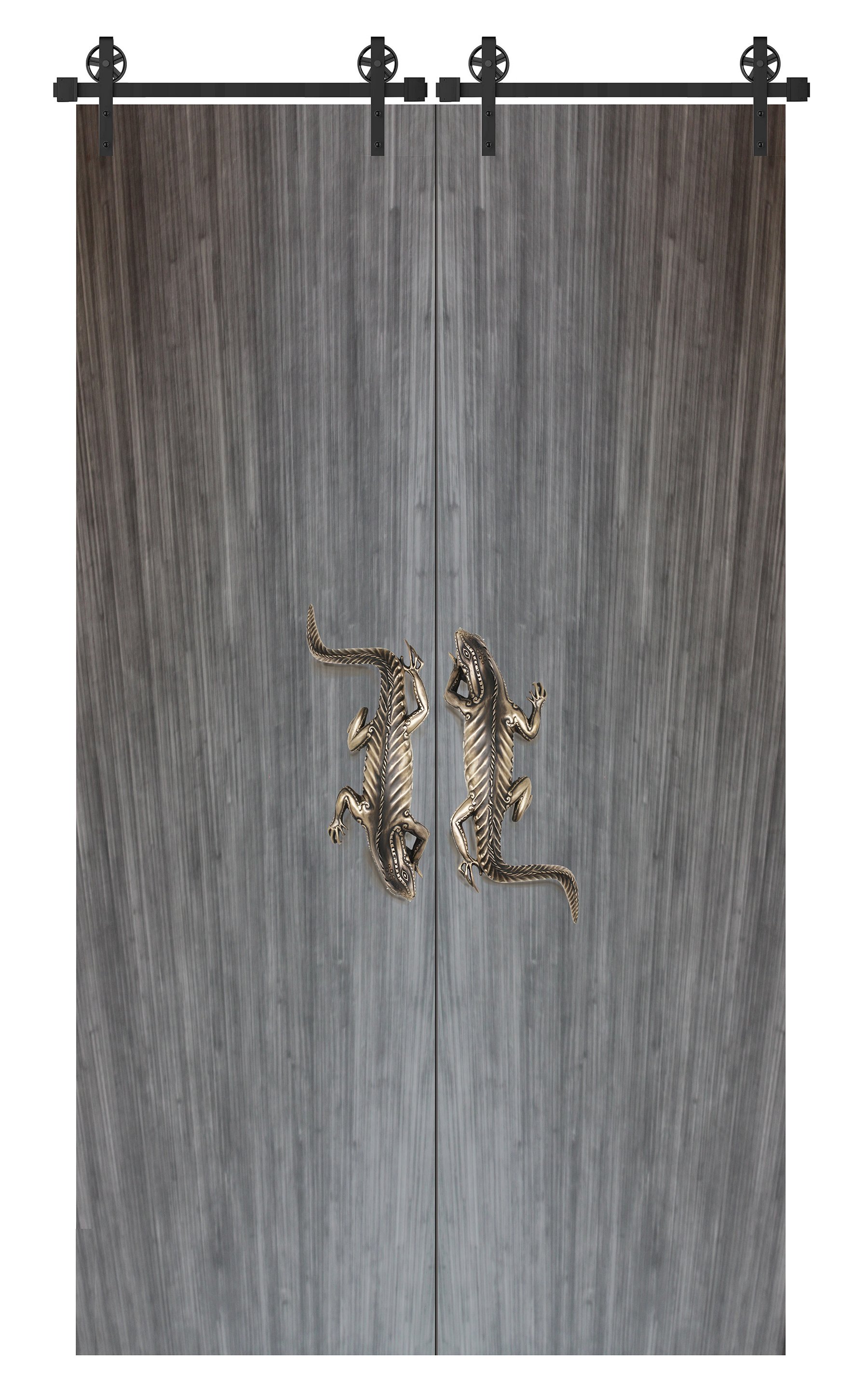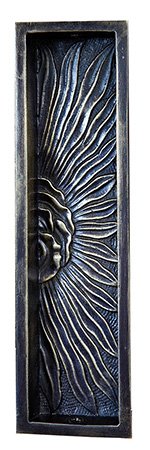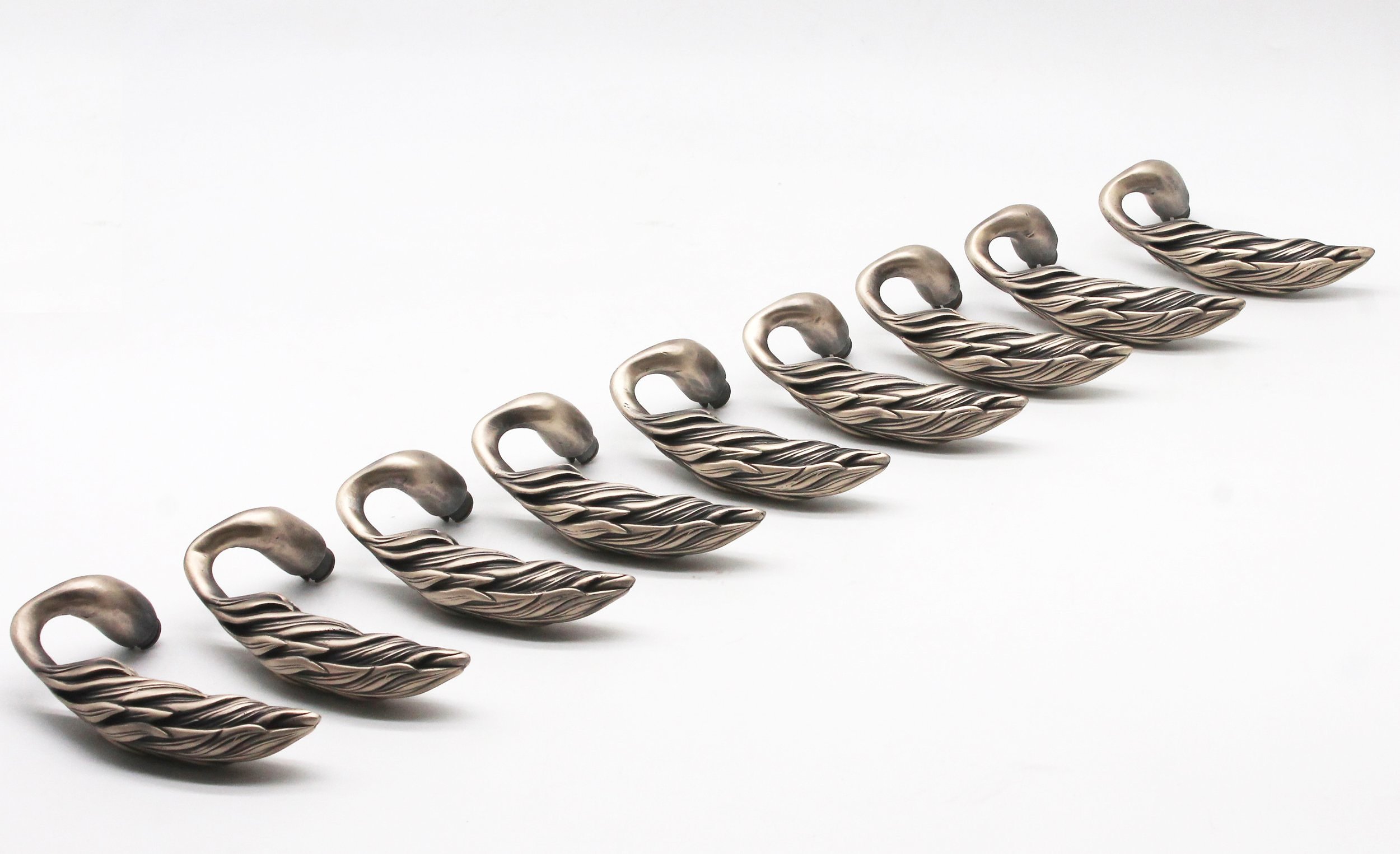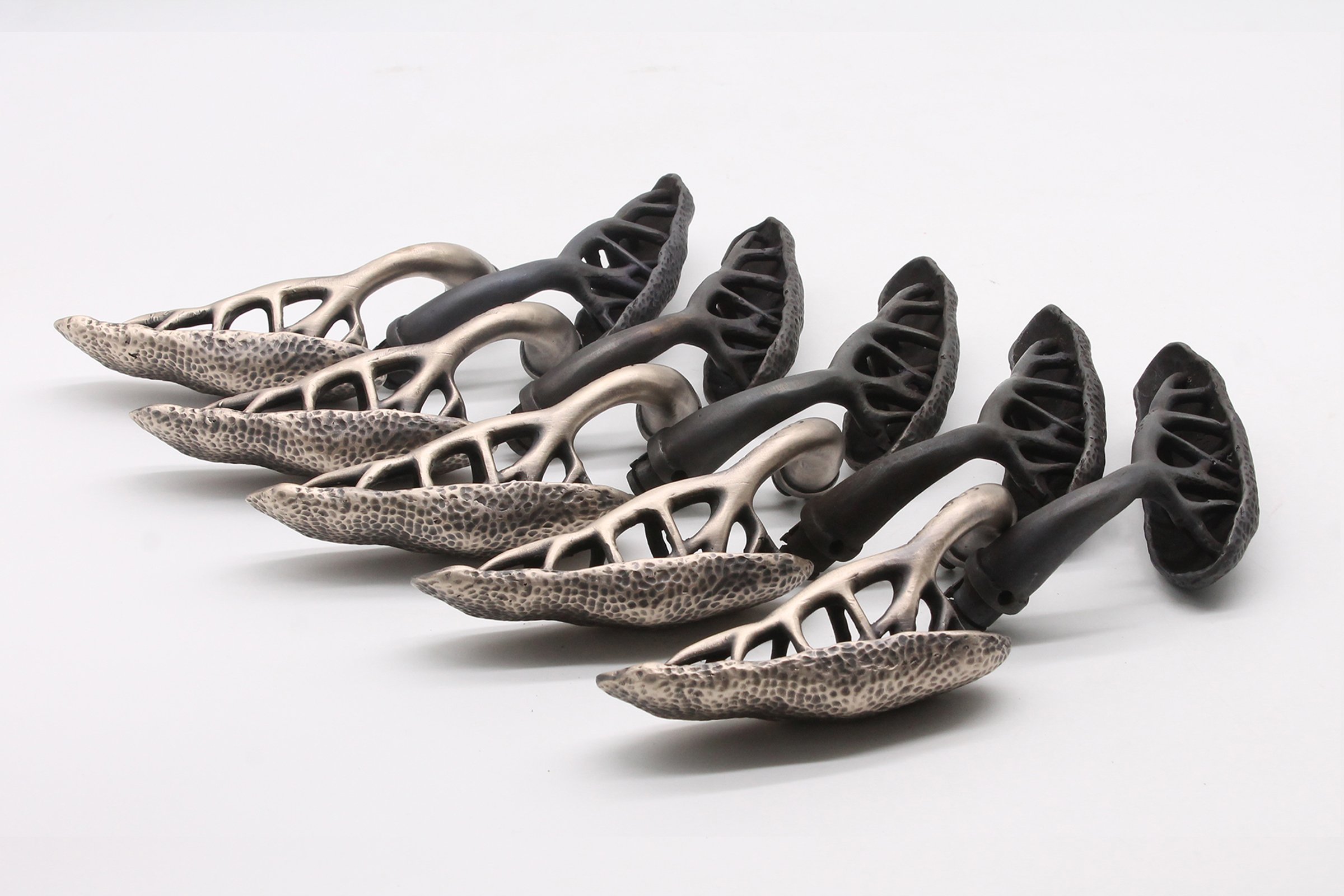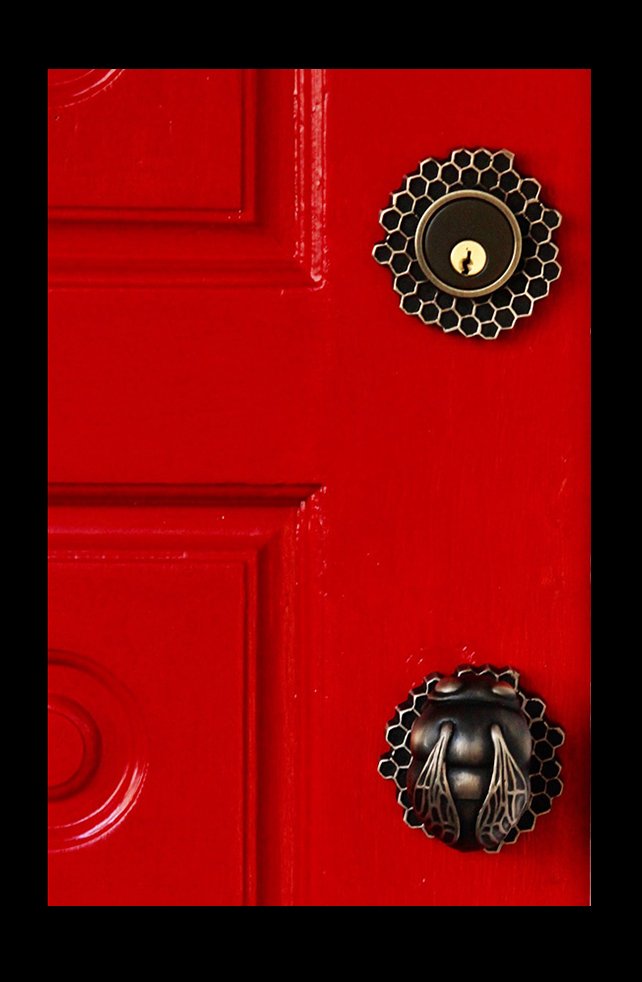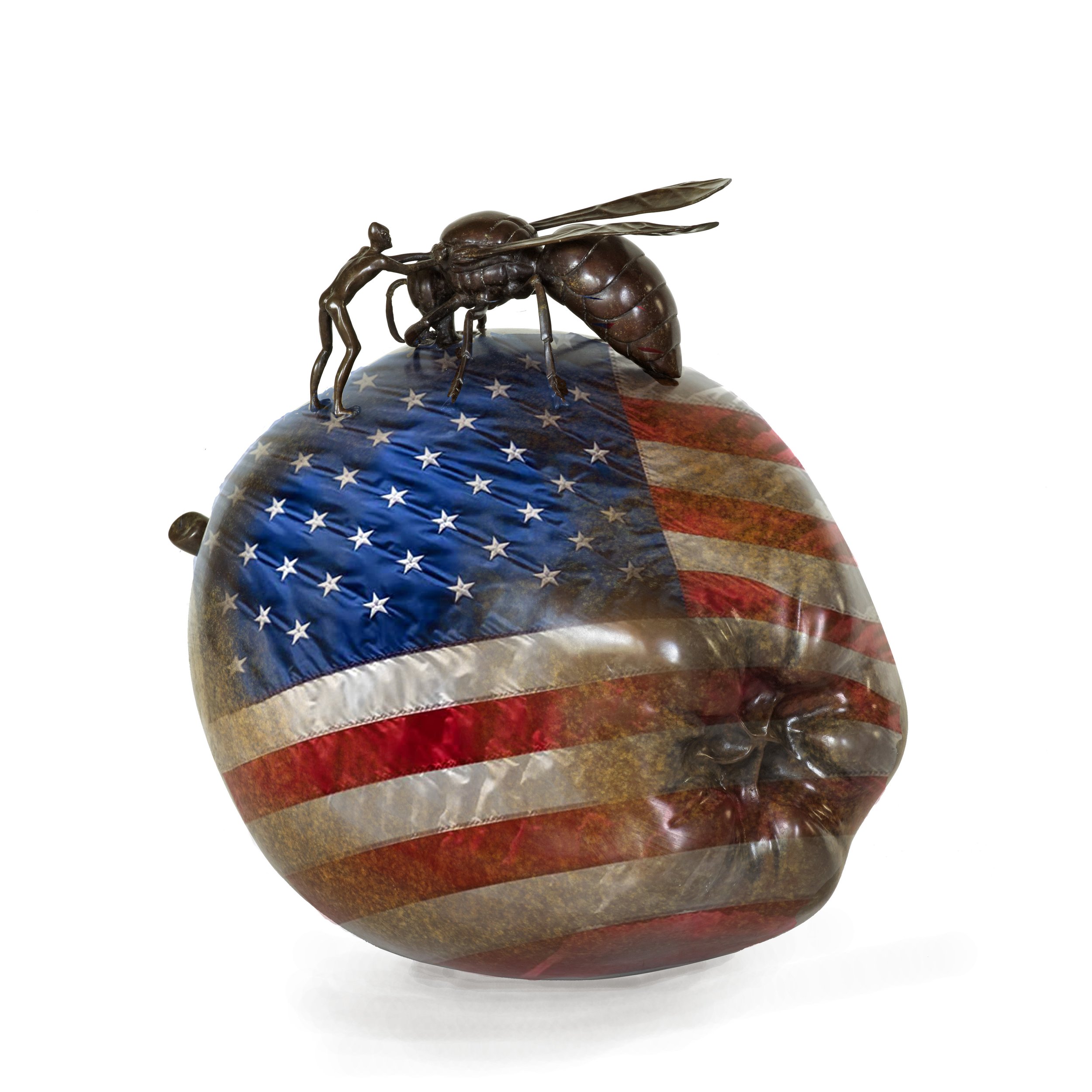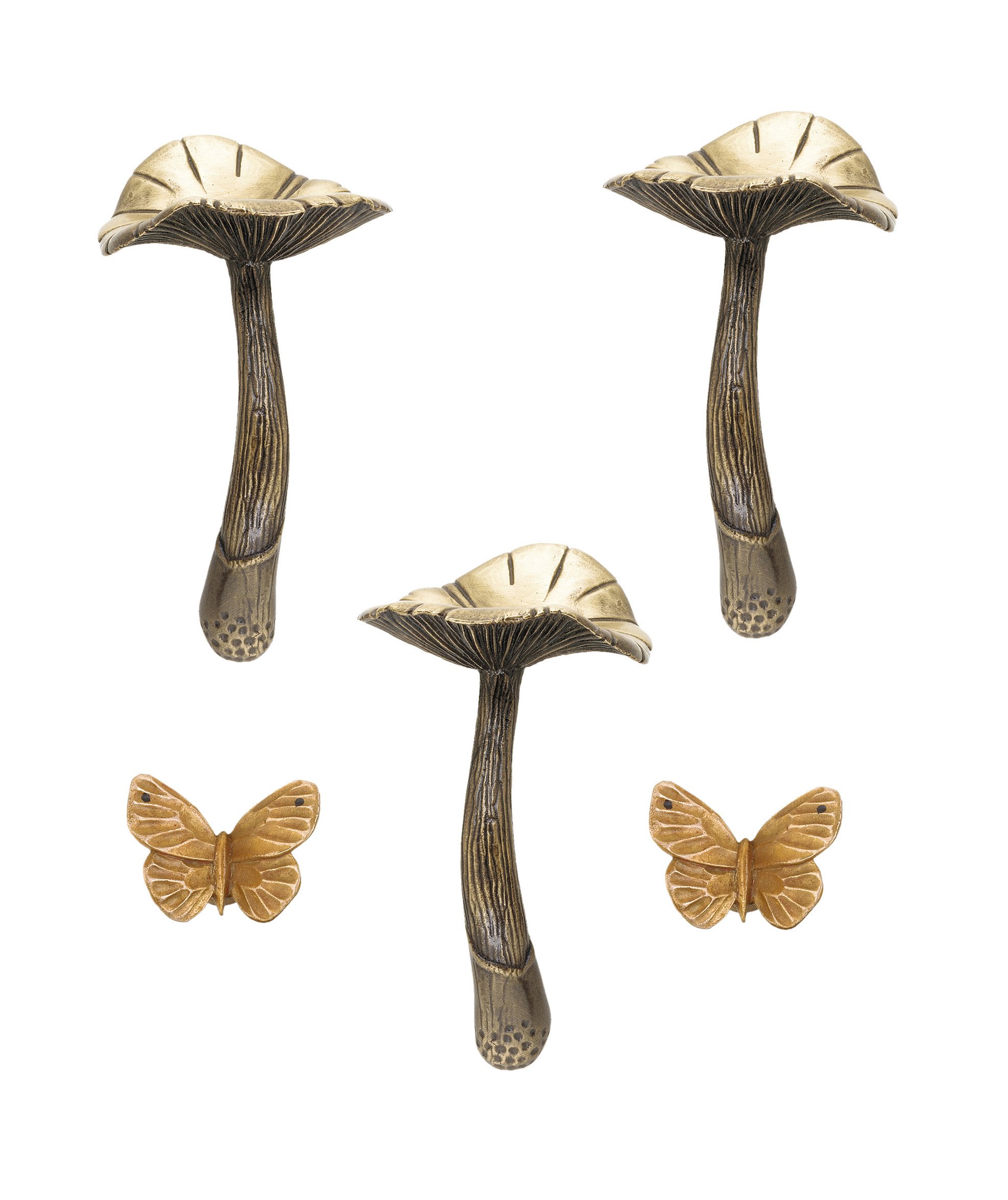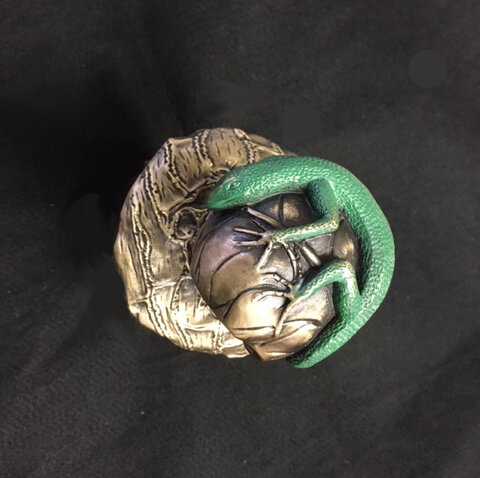Sliding doors or barn doors are the perfect blank canvas for dramatic hardware. When the wall opening permits, double doors make a large statement that can be artfully used to separate rooms. Case in point is a recent order for double doors that separated the dining room from the living room by making an artistic reptilian statement.
The iguana door handle is 17”high 7” wide and 3”deep and the scale makes a substantial statement. The piece was designed to be used as a pair for double sliding doors with each iguana facing the opposite direction to it’s partner. The stylized design has a spiky decorative ridge that extends over the nose and then wraps around the eyes and trails down the front legs.
The original design was very much influenced by Polynesian art and is not based on any particular type of iguana but does reflect a certain stance or attitude that Martin imagines when he thinks about iguanas. The iguana handle is a relative of the other handles and cabinet pulls that make up the lizard collection of door hardware. For cabinet sliding doors the iguanas can be mounted so they entwine head to toe with their partner, a positioning that could be problematic on room doors where the tail and feet could catch on clothing.
Barn doors are more easily installed than traditional hinged doors requiring only a simple bracket to be attached to the top of the door and to a wheel that travels along a track screwed to the wall above the door. They also use a simple garden gate or hook style of latch that can be surface mounted as opposed to the tubular latch used on a hinged door that requires the door to be pre-drilled at time of manufacture.



